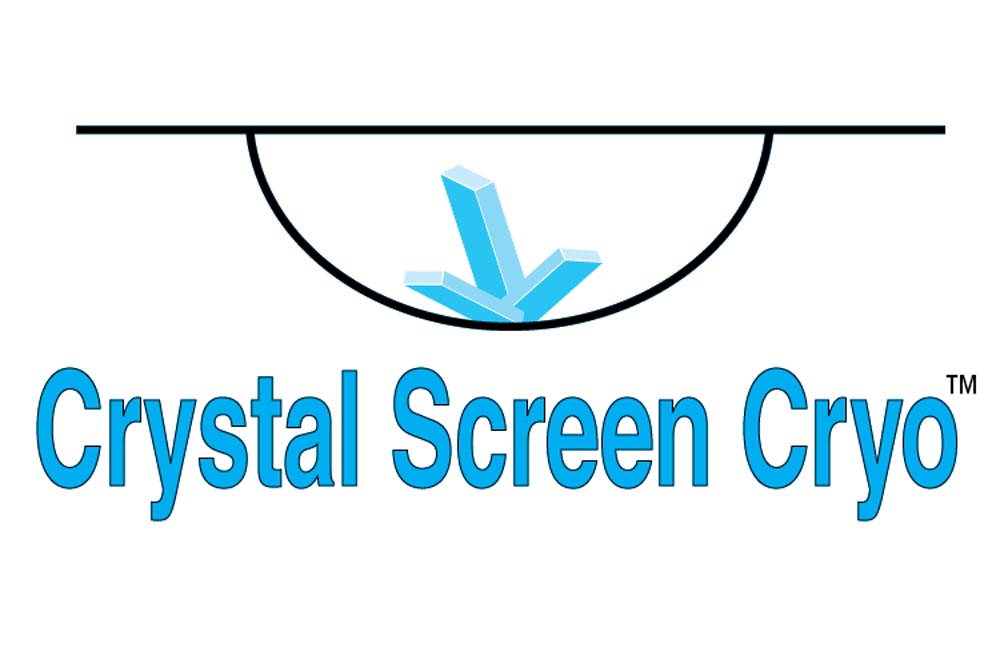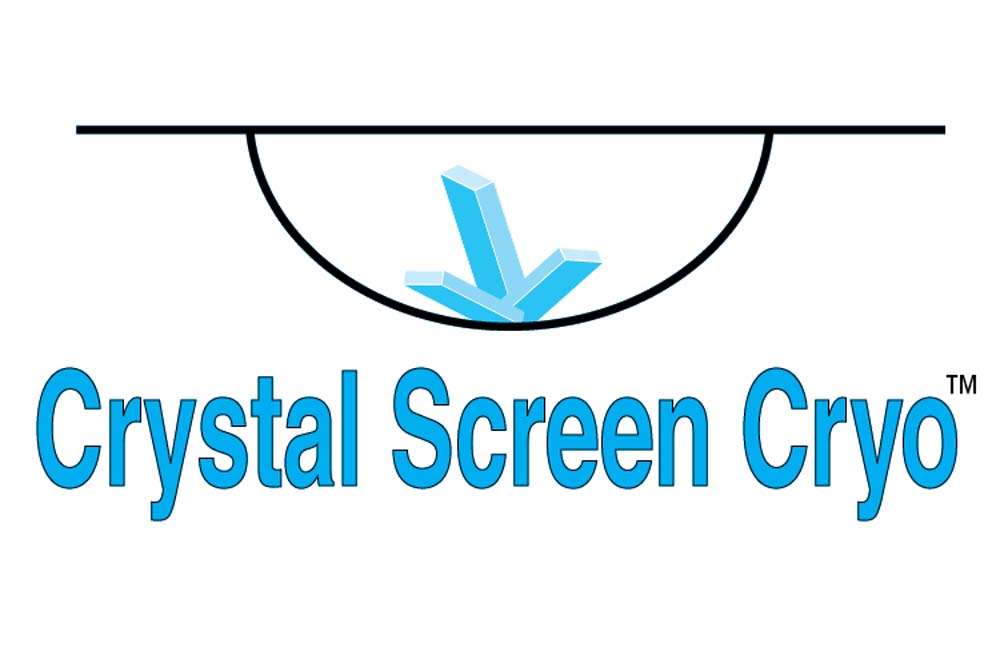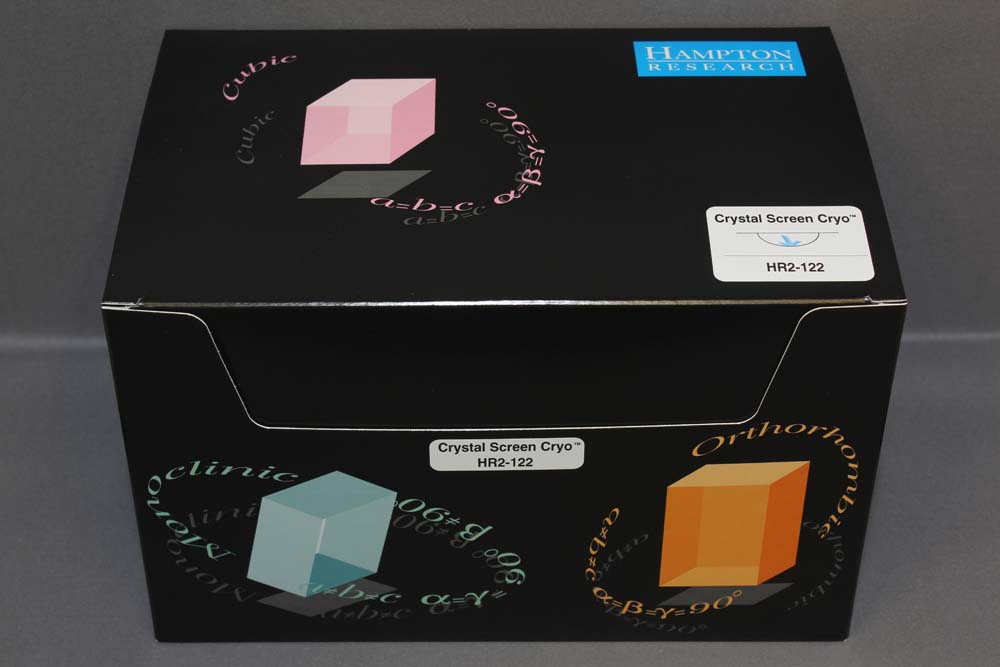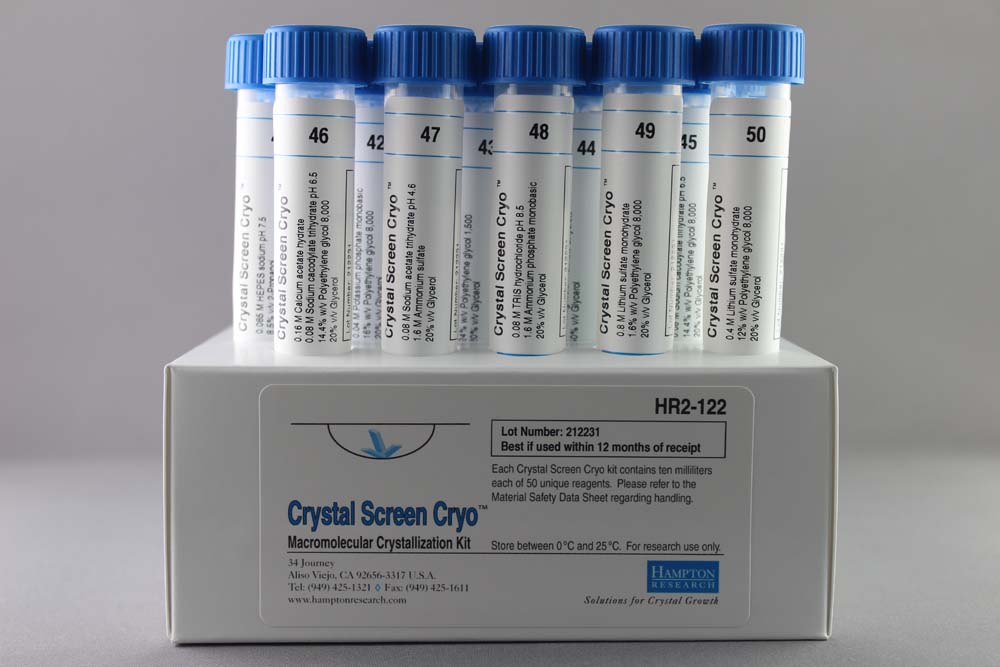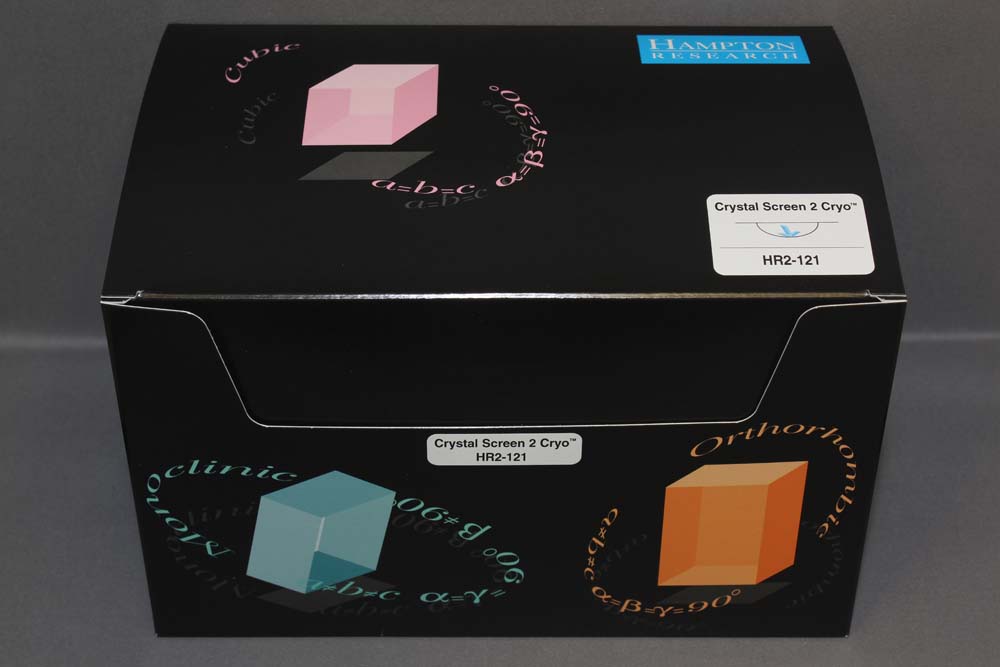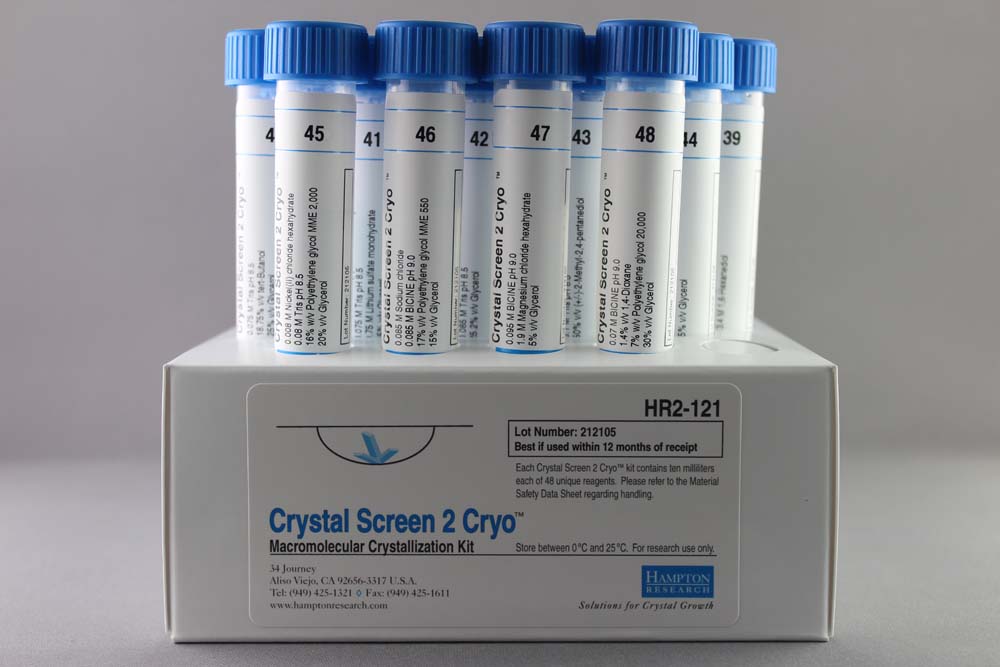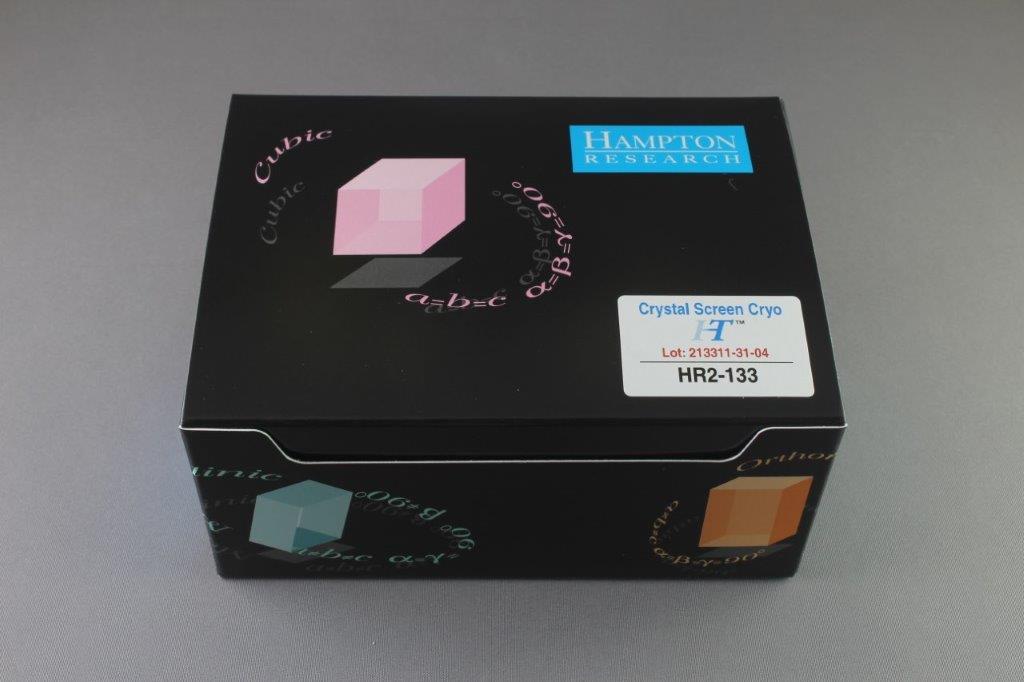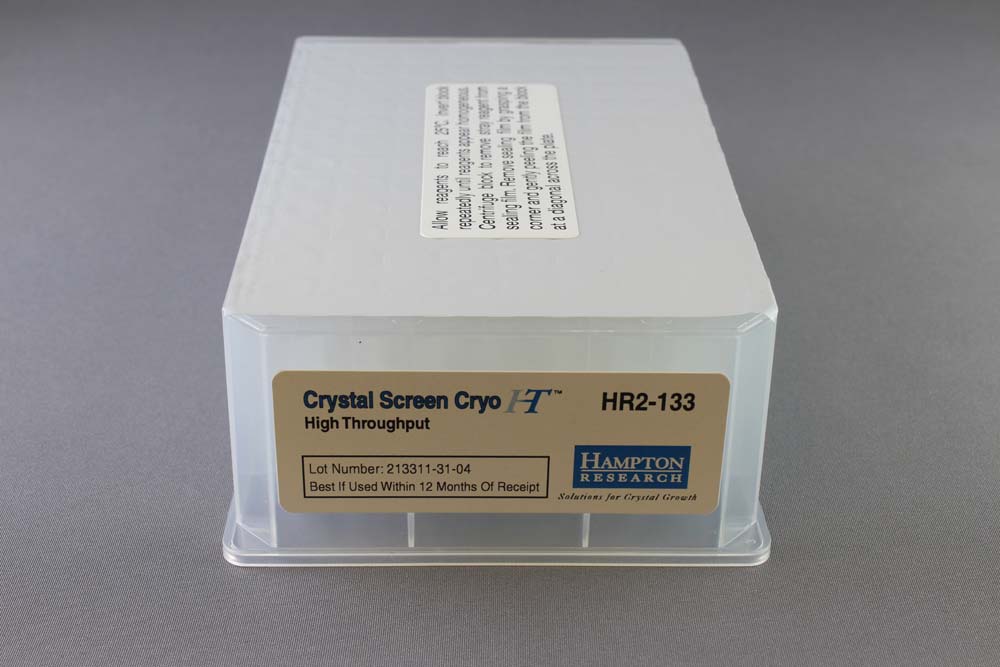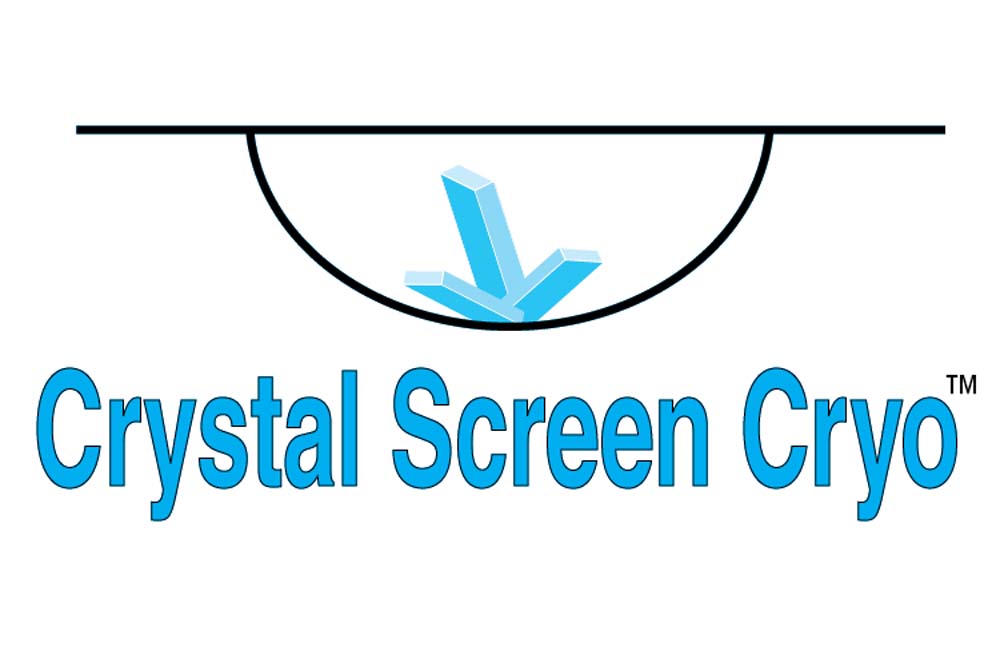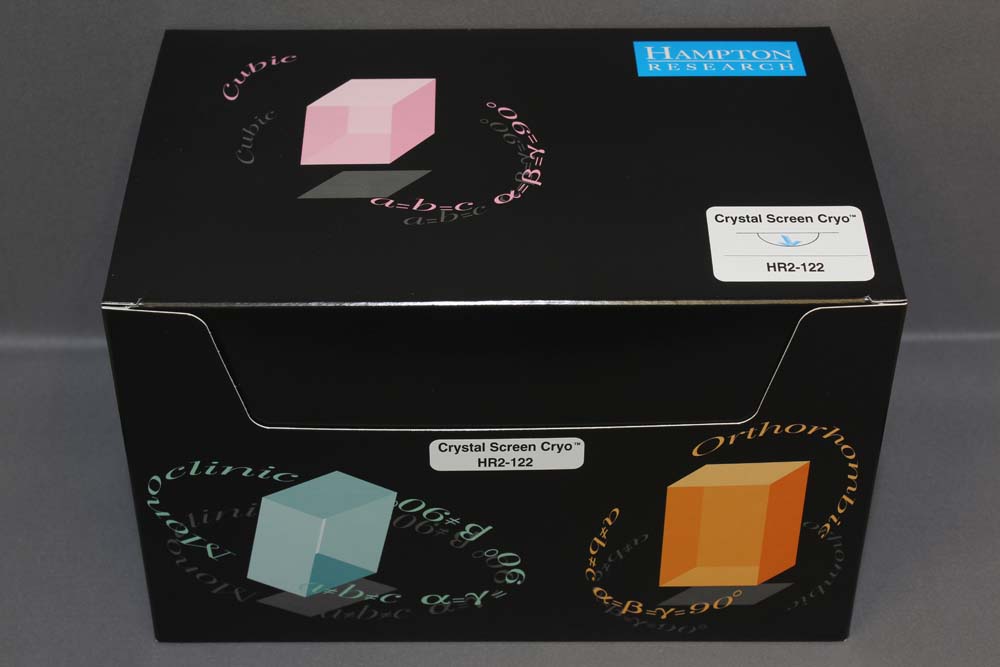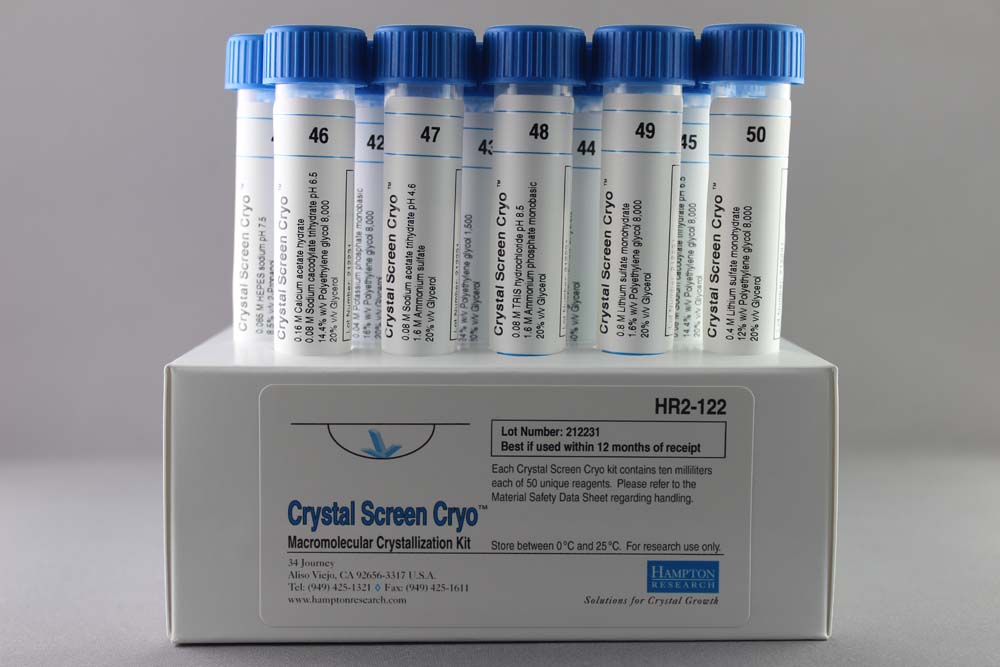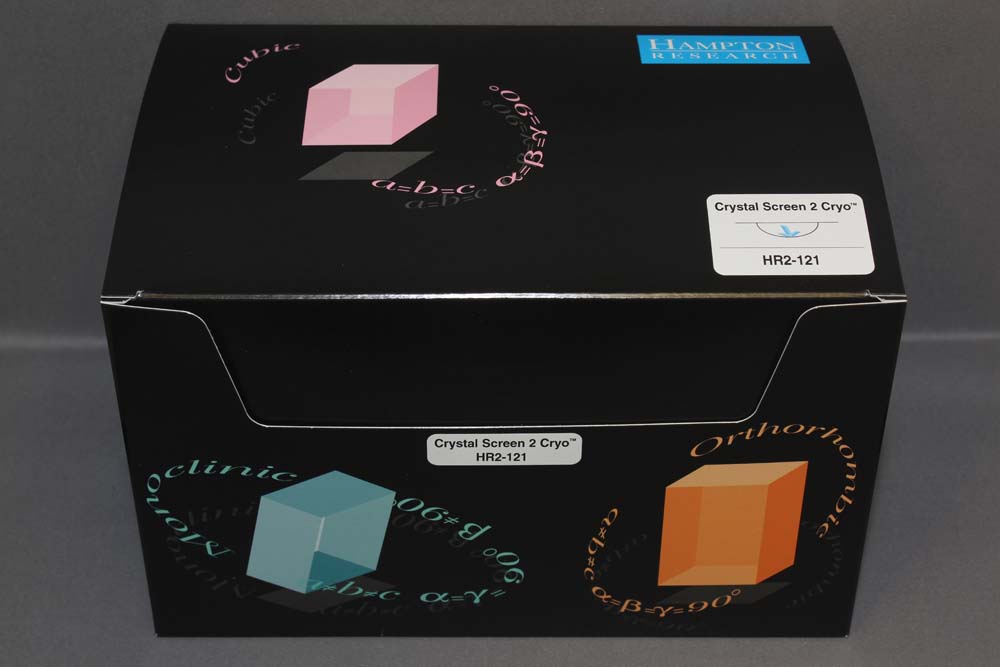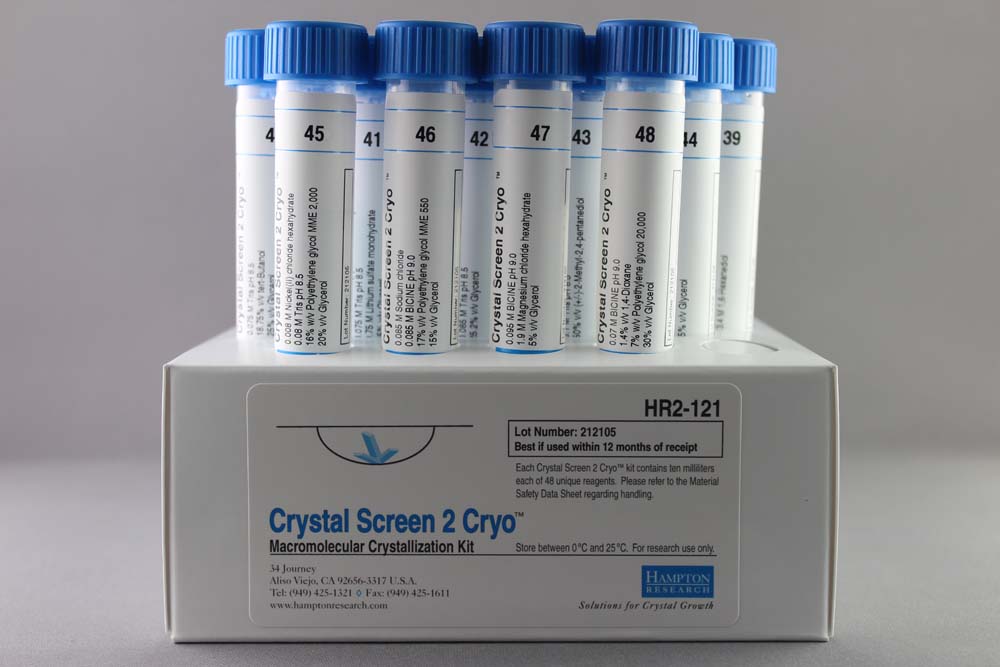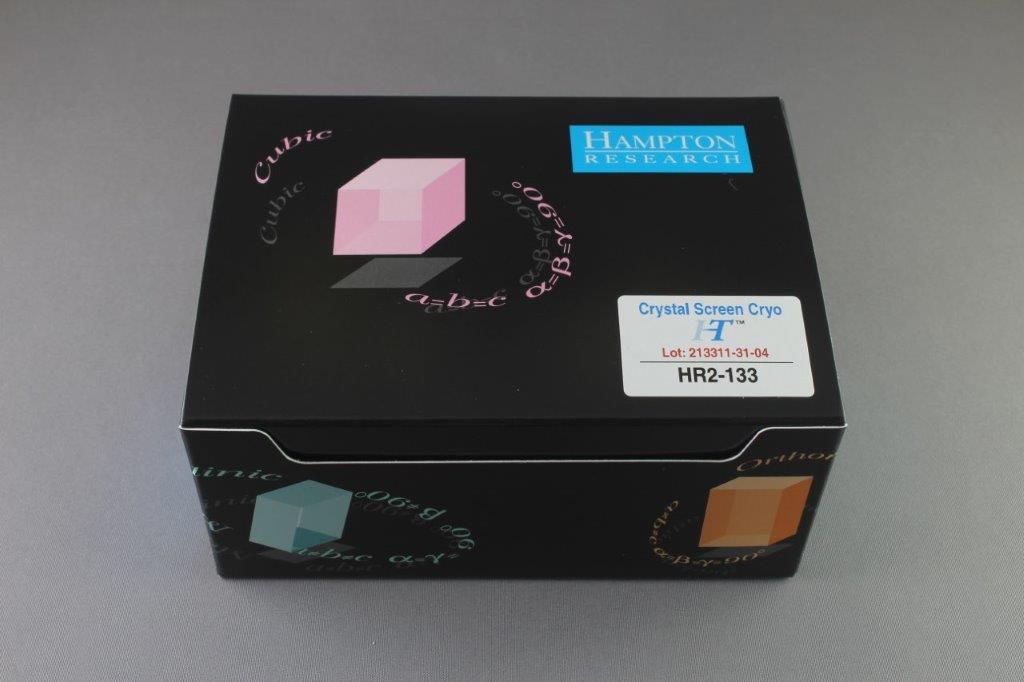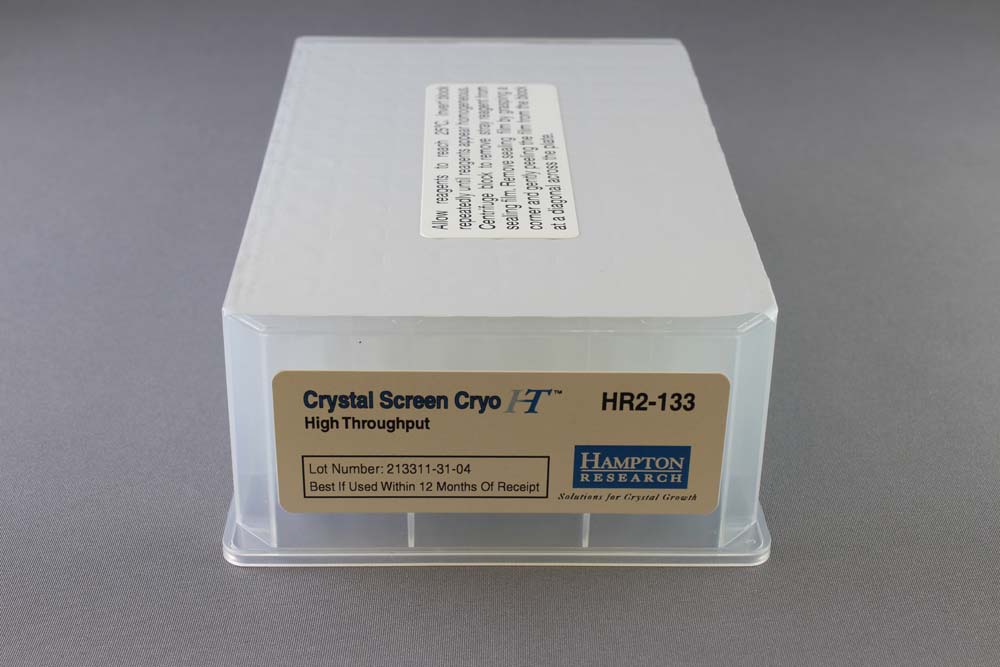Hampton Research蛋白结晶试剂盒






Products > Crystallization Screens > Crystal Screen Cryo • Crystal Screen 2 Cryo > Crystal Screen Cryo • Crystal Screen 2 Cryo
Crystal Screen Cryo • Crystal Screen 2 Cryo
Applications
- Primary biased sparse matrix screen with cryo for proteins, soluble peptides, nucleic acids, & water soluble small molecules.
Features
- Developed at Hampton Research
- Cryo ready screening reagents for cryocrystallography
- Sparse matrix formula efficiently samples salts, polymers, organics, & pH
- Tube or Deep Well block format
- Screen for cryo and crystallization conditions using only one screen
Description
Determining initial and optimal cryoprotectant concentration is often a process of trial and error. One must find suitable cryoprotectant concentrations which stabilize the crystal while at the same time combine with the crystallization reagent to form an amorphous glass.
The Crystal Screen Cryo kits removes the guess work from determining the preliminary glycerol concentration required to mix with the crystallization reagent to form an amorphous glass. Crystal Screen Cryo reagents are formulated with the appropriate amount of glycerol required to form an amorphous glass with each unique reagent composition. Crystals obtained in Crystal Screen Cryo kits will already have a suitable concentration of glycerol in the reagent. This avoids exhaustive empirical searches for preliminary cryoprotectant conditions. From the preliminary cryoprotectant conditions, cryoprotectant concentration can be optimized to minimize mosaic spread and maximize diffraction resolution.
Crystal Screen Cryo kits are biased sparse matrices designed for rapid screening of crystallization conditions of biological macromolecules in the presence of glycerol, the most frequently utilized cryoprotectant. The Crystal Screen Cryo kits utilize the original Crystal Screen™ and Crystal Screen 2™ protocol optimized to include the appropriate concentration of glycerol required to form an amorphous glass at 100°K. The primary screen variables are salt, pH, precipitant (salts, polymers, volatile organics, and non-volatile organics), and cryoprotectant concentration. The screen is a straightforward, effective, and practical kit for determining preliminary crystallization conditions and provides a good starting point for finding suitable cryoprotectant conditions for macromolecular crystals grown in a wide range of reagents. Crystal Screen Cryo is also effective in determining the solubility of a macromolecule in a wide range of precipitants and pH.
Crystal Screen Cryo contains 50 unique reagents, 10 ml each and is based on the sparse matrix formulation first described by Jancarik and Kim in 1991 and refined for cryo by Garman in 1996.
Crystal Screen 2 Cryo contains 48 unique reagents, 10 ml each and is based on the formulation first described by Cudney et al in 1994 and refined for cryo by Snell et al in 2002.
Crystal Screen Cryo HT contains 1 ml each of reagents 1-48 from Crystal Screen Cryo and 48 reagents from Crystal Screen 2 Cryo in a single Deep Well block format.
Ready-to-use reagents are sterile filtered and formulated with ultra-pure Type 1 water, using the highest purity salts, polymers, organics and buffers.
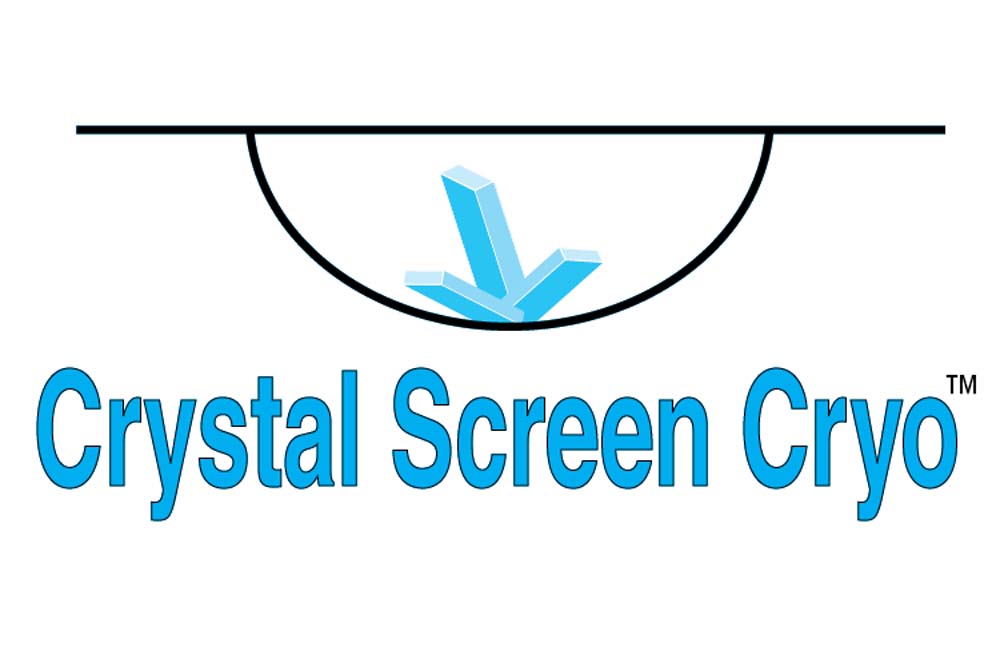
Click to Zoom In
CAT NO
HR2-122
NAME
DESCRIPTION
10 ml, tube format
PRICE
$253.00
cart quote
CAT NO
HR2-121
NAME
DESCRIPTION
10 ml, tube format
PRICE
$253.00
cart quote
CAT NO
HR2-133
NAME
DESCRIPTION
1 ml, Deep Well block format
PRICE
$147.00
cart quote
Support Material(s)
 HR2-122 Crystal Screen Cryo Documents
HR2-122 Crystal Screen Cryo Documents HR2-122 Crystal Screen Cryo SDS
HR2-122 Crystal Screen Cryo SDS HR2-121 Crystal Screen 2 Cryo Documents
HR2-121 Crystal Screen 2 Cryo Documents HR2-121 Crystal Screen Cryo 2 SDS
HR2-121 Crystal Screen Cryo 2 SDS HR2-133 Crystal Screen Cryo HT Documents
HR2-133 Crystal Screen Cryo HT Documents HR2-133 Crystal Screen Cryo HT SDS
HR2-133 Crystal Screen Cryo HT SDS Crystal Screen Cryo kits Formulation & Scoring Data
Crystal Screen Cryo kits Formulation & Scoring Data Related Item(S)
- Individual Crystal Screen Cryo • Crystal Screen 2 Cryo • Crystal Screen Cryo HT Reagents
References
1. Garman, E.F. and Mitchell, E.P., J. Appl. Cryst. (1996) 29, 584- 587.
2. Structure of the single-stranded DNA-binding protein from Streptomyces coelicolor. Stefanic et al, Acta Cryst. (2009) D65, 974-979.
3. The development and application of a method to quantify the quality of cryoprotectant solutions using standard area-detector X-ray images. McFerrin and Snell, J. Appl. Cryst. (2002). 35, 538-545.
4. Cudney, R., Patel, S., Weisgraber, K., Newhouse, Y., and McPherson, A., Acta Cryst. (1994) D50, 414-423.


Hampton Research, first in crystallization since 1991, developing and delivering crystallization and optimization screens, reagents, plates, and other tools for the crystallization of biological macromolecules, including proteins (antibody), peptides (insulin), and nucleic acids (DNA).
- Products
- Gallery
- My Account
|
|
|
- Contact Us
- Quick Order
- Support
|
- Privacy Policy
- Terms and Conditions
|
- Products
- Gallery
- My Account
- Support
- Contact Us
- Quick Order
- Privacy Policy
- Terms and Conditions
|
|
|
|
|
|
|
© 2021 HAMPTON RESEARCH CORP.
| Website by Skyhound Internet


